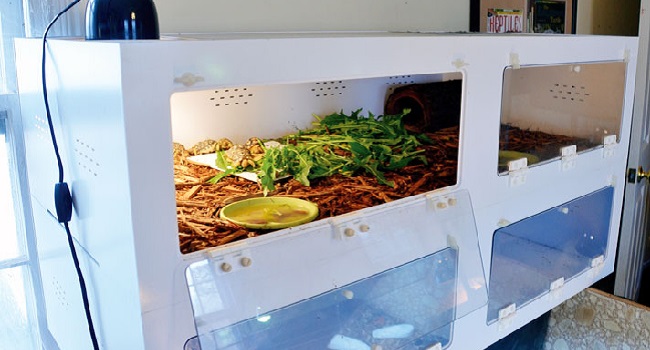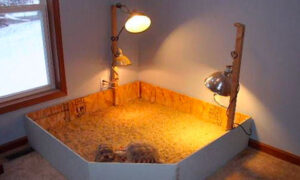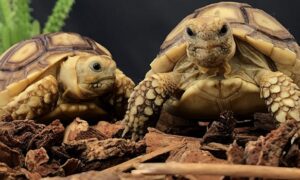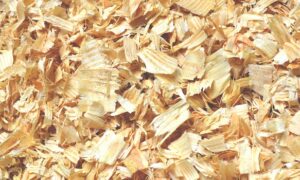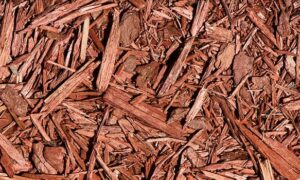If you have a baby sulcata tortoise, or you’re thinking about getting a baby sulcata, an indoor enclosure is probably the best. Keeping a baby tortoise inside for the first few years will reduce the risks of escape, predators and other health issues related to weather (too hot, too cold, too dry, too wet). Set up an indoor enclosure for a baby sulcata until it is ready to live outside.
Sulcata Enclosure Size
When you set up an indoor enclosure for a baby sulcata tortoise, choosing the right size enclosure for a tortoise can make a big difference in your budget. If you choose a smaller enclosure will be cheaper, but you’ll ehave to replace it more often. If you buy or make a larger enclosure, you’ll spend more initially, but you’ll save yourself time and money from having to replace the enclosure as the baby tortoise grows.
The absolute minimum size enclosure for a baby sulcata would be about 36″ Wide x 18″ Deep x 19″ Tall.
The enclosure should really be as large as you can afford, in space and money. Even baby sulcatas need plenty of space to walk around and explore. Once you add at least one house, a food dish and water bowl, you take up a lot of floor space in the enclosure.
Sulcata Tortoise Bedding
The best substrate for a baby sulcata tortoise enclosure is going to be one that holds humidity but does not mold. Coconut coir, cypress mulch, orchard bark and top soil are the best sulcata tortoise substrates.
If you dig up natural substrate from your yard, make sure to only use material that is from a pesticide-free and herbicide-free area.
Avoid using hay as bedding in a sulcata enclosure. Hay will mold with the high humidity that is needed.
Do not use pine or cedar shavings. Both of these woods have oils that can cause illnesses. Avoid pellets, sand, newspaper and substrate that contains fertilizers or chemicals.
Lighting and UVB for Sulcata Tortoise
Lighting is important for an indoor sulcata tortoise enclosure. You want to be able to create a day/night scene to ensure proper digestion and sleep. You need to have a UVB light tube or bulb.
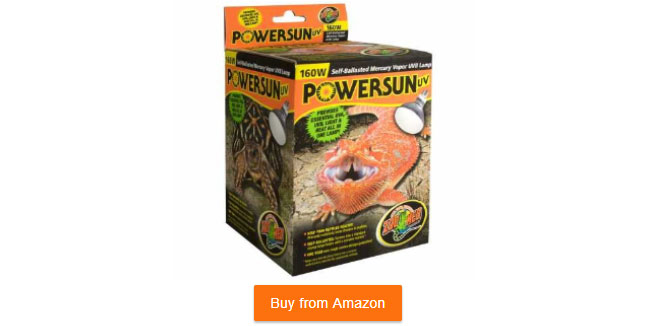
Some sulcata tortoise keepers will use a basic flood light for lighting (and heat), but they will sit the baby tortoise outside for a few hours a day.
If you put a baby sulcata tortoise outside at least one hour per one inch of length outside a few times a week, you don’t need to use an additional UVB source inside.
Keep in mind that no beneficial UV rays will penetrate through glass, so it doesn’t do any good to stick your tortoise by a window.
Heating for Sulcata Tortoise
Heat is very important. Without proper heat, a tortoise cannot digest its food properly, which can cause growth problems and other health issues. Without proper heating, a baby tortoise can develop respiratory conditions and other illnesses.
It’s important to use a good heat bulb, like a ceramic heat emitter (CHE).
The indoor enclosure should have a basking are of about 100-degrees Fahrenheit. The ambient temperature should be between 80 – 90-degrees. Nighttime temperatures should remain above 70-degrees.
Sulcata Tortoise Humidity
Baby sulcata tortoises need a humidity level around 80%. The best way to achieve a high humidity level is to use bedding that will hold moisture and to build a closed chamber enclosure. Maintaining a high humidity level mimics the natural season when sulcatas are born in the wild. Plus, high humidity will help reduce the risk of pyramiding.
If you are struggling to reach and maintain high humidity in the sulcata enclosure, try using a fogger. A reptile fogger can increase the humidity level.
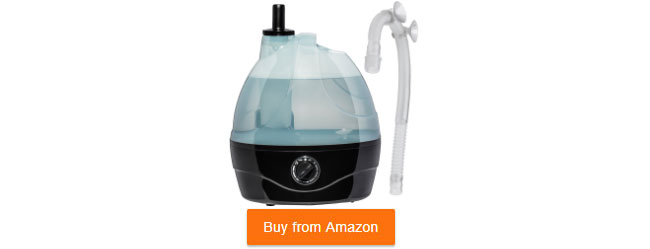
House for Sulcata Tortoise
Once you have the heating, lighting and substrate figured out. You’ll need to fill the enclosure. Ideally, you would have two houses for the baby sulcata to rest and hide. Place one house on each side of the enclosure. A house is important for the tortoise to relax and feel secure. A good house will help reduce stress.
A good sulcata tortoise house can be a half log or a large pot set on its side. Choose a house that will be safe for your tortoise. Although, half logs are the most popular sulcata tortoise house, baby tortoises can flip over trying to climb on them. Use your best judgement when buying a sulcata hide.
Food and Water Bowls for Baby Sulcatas
A baby sulcata tortoise needs both a food dish and water bowl. For smaller sulcatas, use shallow dishes. You can purchase a reptile bowl or you can use a plant saucer.
In addition to daily soaks in a deep dish, fill the water bowl with fresh water daily. Hydration is important to keeping a baby sulcata healthy.
Clean the water bowl and food dish with soap and water weekly to minimize bacteria growth.


